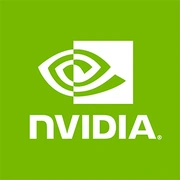NVIDIA RTX 5880 Ada Generation

The NVIDIA RTX 5880 Ada Generation GPU is an absolute powerhouse, boasting impressive specs and delivering top-of-the-line performance. With a base clock of 1155MHz and a boost clock of 2550MHz, this GPU is built for speed and can handle even the most demanding tasks with ease.
The 48GB of GDDR6 memory and a memory clock of 2250MHz ensure that this GPU can handle large and complex datasets without breaking a sweat. The 14080 shading units and 72MB of L2 cache further contribute to its exceptional performance, making it a great choice for intensive gaming, content creation, and professional applications.
In terms of efficiency, the RTX 5880 Ada Generation GPU has a TDP of 285W, which is relatively high but understandable given its impressive performance capabilities. The theoretical performance of 71.81 TFLOPS speaks for itself, showcasing just how powerful this GPU really is.
Overall, the NVIDIA RTX 5880 Ada Generation GPU is a game-changer in the world of desktop GPUs. Its unparalleled performance, massive memory capacity, and efficient design make it a top choice for anyone in need of a high-end graphics solution. Whether you're a hardcore gamer, a professional content creator, or a data scientist, this GPU has the power and capabilities to meet your needs and exceed your expectations.
Basic
Label Name
NVIDIA
Platform
Desktop
Launch Date
January 2024
Model Name
RTX 5880 Ada Generation
Generation
Quadro Ada
Base Clock
1155MHz
Boost Clock
2550MHz
Bus Interface
PCIe 4.0 x16
Memory Specifications
Memory Size
48GB
Memory Type
GDDR6
Memory Bus
?
The memory bus width refers to the number of bits of data that the video memory can transfer within a single clock cycle. The larger the bus width, the greater the amount of data that can be transmitted instantaneously, making it one of the crucial parameters of video memory. The memory bandwidth is calculated as: Memory Bandwidth = Memory Frequency x Memory Bus Width / 8. Therefore, when the memory frequencies are similar, the memory bus width will determine the size of the memory bandwidth.
384bit
Memory Clock
2250MHz
Bandwidth
?
Memory bandwidth refers to the data transfer rate between the graphics chip and the video memory. It is measured in bytes per second, and the formula to calculate it is: memory bandwidth = working frequency × memory bus width / 8 bits.
864.0 GB/s
Theoretical Performance
Pixel Rate
?
Pixel fill rate refers to the number of pixels a graphics processing unit (GPU) can render per second, measured in MPixels/s (million pixels per second) or GPixels/s (billion pixels per second). It is the most commonly used metric to evaluate the pixel processing performance of a graphics card.
448.8 GPixel/s
Texture Rate
?
Texture fill rate refers to the number of texture map elements (texels) that a GPU can map to pixels in a single second.
1122 GTexel/s
FP16 (half)
?
An important metric for measuring GPU performance is floating-point computing capability. Half-precision floating-point numbers (16-bit) are used for applications like machine learning, where lower precision is acceptable. Single-precision floating-point numbers (32-bit) are used for common multimedia and graphics processing tasks, while double-precision floating-point numbers (64-bit) are required for scientific computing that demands a wide numeric range and high accuracy.
71.81 TFLOPS
FP64 (double)
?
An important metric for measuring GPU performance is floating-point computing capability. Double-precision floating-point numbers (64-bit) are required for scientific computing that demands a wide numeric range and high accuracy, while single-precision floating-point numbers (32-bit) are used for common multimedia and graphics processing tasks. Half-precision floating-point numbers (16-bit) are used for applications like machine learning, where lower precision is acceptable.
1122 GFLOPS
FP32 (float)
?
An important metric for measuring GPU performance is floating-point computing capability. Single-precision floating-point numbers (32-bit) are used for common multimedia and graphics processing tasks, while double-precision floating-point numbers (64-bit) are required for scientific computing that demands a wide numeric range and high accuracy. Half-precision floating-point numbers (16-bit) are used for applications like machine learning, where lower precision is acceptable.
70.374
TFLOPS
Miscellaneous
SM Count
?
Multiple Streaming Processors (SPs), along with other resources, form a Streaming Multiprocessor (SM), which is also referred to as a GPU's major core. These additional resources include components such as warp schedulers, registers, and shared memory. The SM can be considered the heart of the GPU, similar to a CPU core, with registers and shared memory being scarce resources within the SM.
110
Shading Units
?
The most fundamental processing unit is the Streaming Processor (SP), where specific instructions and tasks are executed. GPUs perform parallel computing, which means multiple SPs work simultaneously to process tasks.
14080
L1 Cache
128 KB (per SM)
L2 Cache
72MB
TDP
285W
Benchmarks
FP32 (float)
Score
70.374
TFLOPS
Compared to Other GPU
FP32 (float)
/ TFLOPS
Related GPU Comparisons
Share in social media
Or Link To Us
<a href="https://cputronic.com/en/gpu/nvidia-rtx-5880-ada-generation" target="_blank">NVIDIA RTX 5880 Ada Generation</a>
